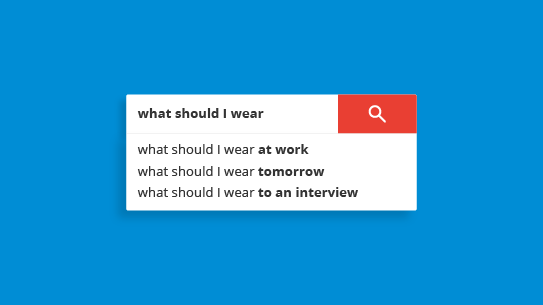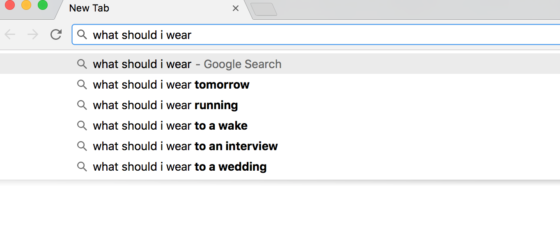Why even ‘casual’ companies should have dress codes
Companies should have dress codes to define what professionalism looks like in their workplace. Dress codes can clarify roles, career aspirations, and client-facing responsibilities. They can eliminate confusion in companies without written codes, and help separate good looks from good work.

The days of the formal company dress code are numbered. Even traditional suit industries like banking are loosening their standards. But lax or non-existent dress codes promote the false ideal that appearances don’t matter at work. Your boss and your co-workers judge you, dress code or not. And there’s always a silent dress code in the absence of a real one, either self-imposed, influenced by co-workers or designed to impress managers.
Absent a clear policy, or language, of what’s acceptable, employees follow an unspoken company dress code or micro dress codes (when groups of employees dress similarly based on position or department.) In Silicon Valley, micro dress codes are especially prominent. They’re so obvious that developers, designers and entrepreneurs can be identified on the street by what they wear.
A company dress code defines what professionalism looks like in your workplace. The way you dress may reveal what division you work in, your career aspirations and whether your job involves facing clients. In companies without written dress codes, ambiguity can lead to confusion. Businesses that codify a set of expectations around dress will clear confusion, increase inclusion and be better positioned to separate good looks from good work.
Why some businesses shy away from company dress codes
Employers are trading formal dress codes for more casual ones as a way to attract job candidates in a competitive market. This shift is driven in part by millennials, who don’t want to suit up to work – at least not like their parents did. Millennials make up the majority of the workforce, so a lax dress code makes financial sense when trying to attract them.
But what is lax? How do you dress for work in a casual environment? And does a leadership role entail a different type of dress? How do we know that casual doesn’t mean pajamas? There is no straight answer to these questions. The phrase “business casual” seems to be the answer, but it just joins two desirable words together to get an ill-defined concept. A quick Pinterest search will reveal that this style of dress style is open to interpretation.

Why companies should embrace dress codes, instead
Avoiding a formal, written dress code company policy in favor of an informal, flexible, unwritten policy might be perceived as freeing up employees to be creative about personal dress. But ‘flexible’ policies can be vague, and lead to unnecessary confusion.
We secretly wonder what to wear (not just to work, but to most occasions) and we look for guidance:

Companies that avoid formalizing their dress code into a clear, written policy don’t remove these questions. They just make things more confusing. They also have a harder time addressing what to do when dress becomes inappropriate to one or many individuals (e.g. clothing with offensive language or messages, or employees with poor hygiene.) So, it’s best to just write a clear, written dress code to avoid confusion and contention.
How to design your company dress code
Bad company dress codes are memorable. They are discriminatory, arbitrary and usually die embarrassingly public deaths. They hurt employer brand and employee morale.
Here are some tips on how to create a thoughtful company dress code:
Simplify, whenever possible
The length of a dress code can hint at its level of specificity. Dress codes that are too specific may not be inclusive or fair. Swiss bank giant, UBS, was ridiculed for a 44-page company dress code that included sections on:
- applying lotion after a shower
- avoiding garlic
- and advising women to wear jackets buttons closed unless they’re sitting, or it’s very hot (and only after they’ve gotten a supervisor’s approval.)
Opt for concise language that covers what you expect in the workplace, and what you deem appropriate – nothing more or less.
Involve your employees
Dress codes shouldn’t feel like shackles. Instead of surprising workers with a policy they had no hand in fashioning, poll them first. Solicit input from a diverse group of employees and managers from different departments. Getting people involved will take the mystery out of the process and result in an inclusive company dress code.
Communicate your policy clearly
The last thing your policy should be is a surprise to an employee. Even for casual policies, communication is key. Define what casual means to you:
- Are sweatshirts/sweatpants OK?
- Does the dress code change day-to-day?
- Do you want to address hygiene?
- Is there a distinction between how managers and subordinates should dress?
- Should a company dress code apply to remote workers?
Your policy might include different expectations for dress in public-facing roles and situations (work events) versus desk jobs with little public interaction.
Avoid discrimination
Our workplaces are already teeming with unconscious biases in the way we write job descriptions and hire people. Company dress codes are not one-size-fits-all policies. An inclusive dress code is gender-neutral and fair, accounts for religious and cultural dress and people with disabilities.
The way we dress is at once an intensely public and very personal decision. Prioritizing flexibility, comfort and employee preferences will go a long way in creating a dress code the whole company can get behind.
Frequently asked questions
- What is the purpose of a company dress code?
- A company dress code defines what professionalism looks like in your workplace. It can reveal an employee's division, career aspirations, and whether their job involves facing clients. In companies without written dress codes, ambiguity can lead to confusion.
- Why do some businesses avoid company dress codes?
- Some employers trade formal dress codes for more casual ones to attract job candidates in a competitive market. This shift is often driven by millennials, who prefer a more relaxed dress code. However, without clear guidelines, this can lead to confusion and vagueness.
- What are the benefits of having a formal dress code?
- A formal, written dress code can clear confusion, increase inclusion, and separate good looks from good work. It provides clear guidelines on what is acceptable to wear, reducing ambiguity and potential misunderstandings.
- How can a company create a thoughtful dress code?
- To create a thoughtful dress code, companies should simplify whenever possible, involve employees in the process, communicate the policy clearly, and avoid discrimination. The dress code should be inclusive, fair, and considerate of religious, cultural, and personal preferences.
- What should a company consider when defining a casual dress code?
- When defining a casual dress code, companies should consider whether sweatshirts/sweatpants are acceptable, if the dress code changes day-to-day, how to address hygiene, whether there's a distinction between how managers and subordinates should dress, and if the dress code applies to remote workers.




